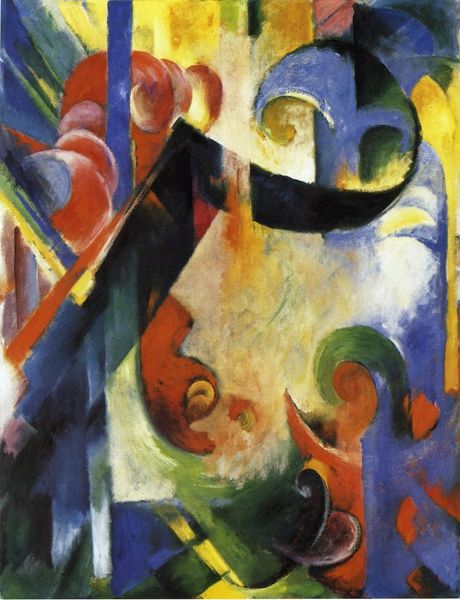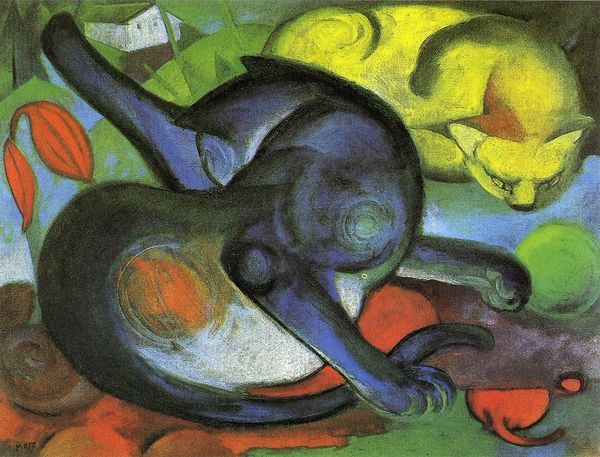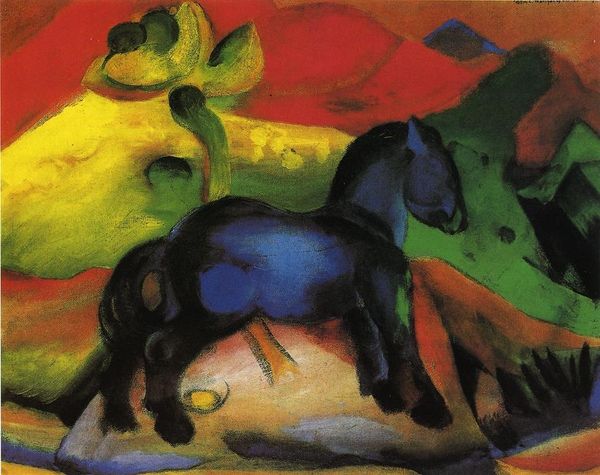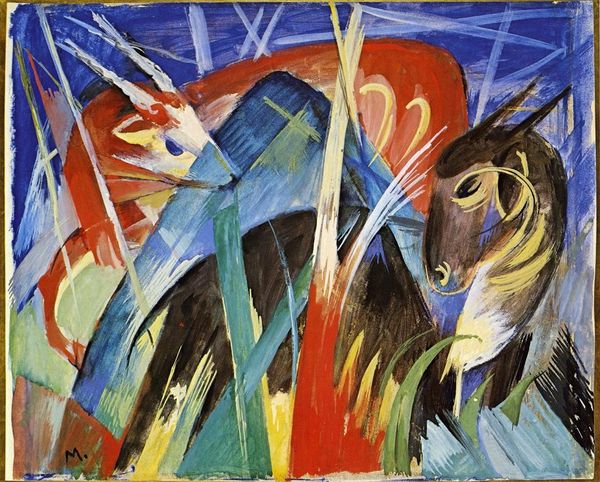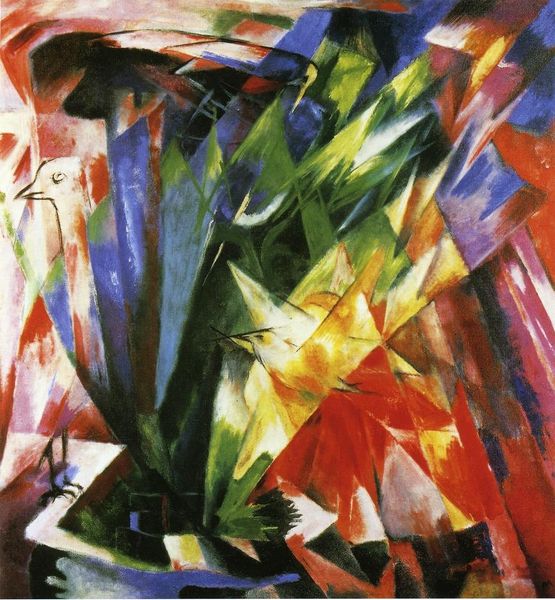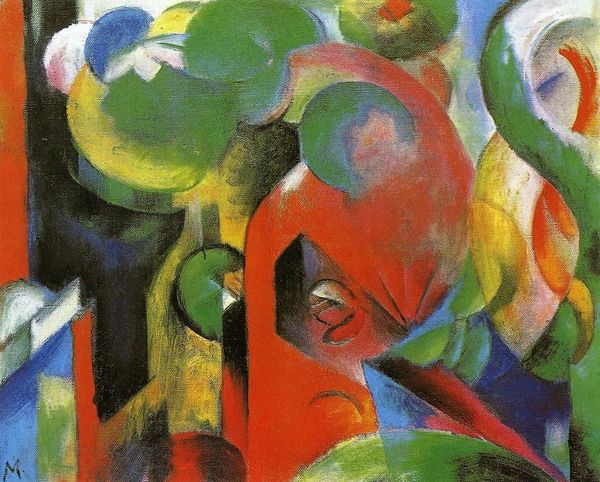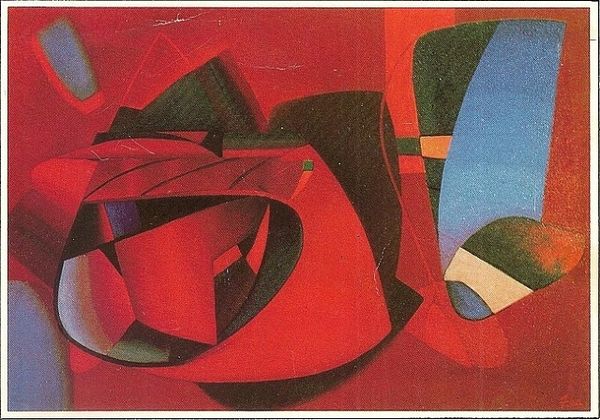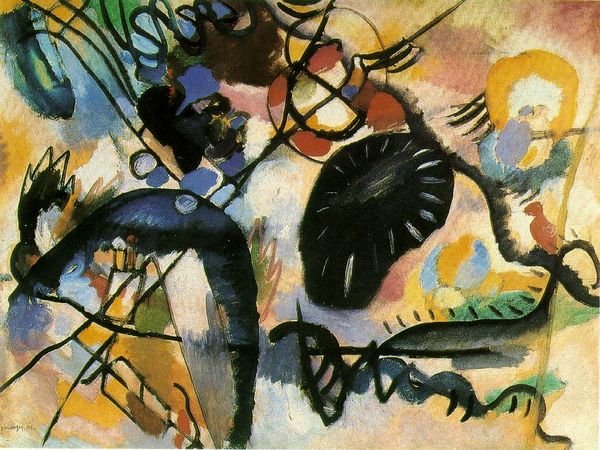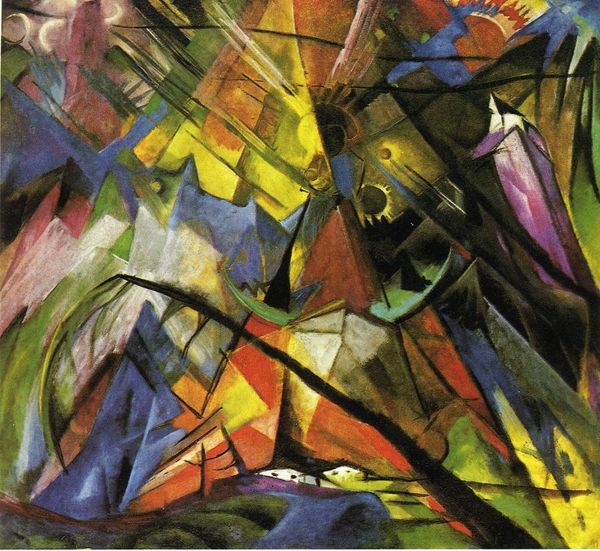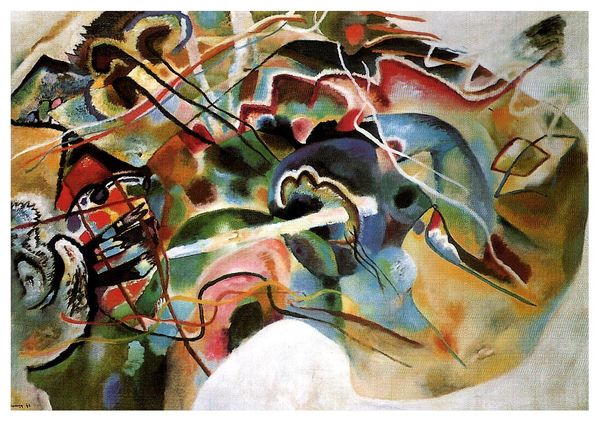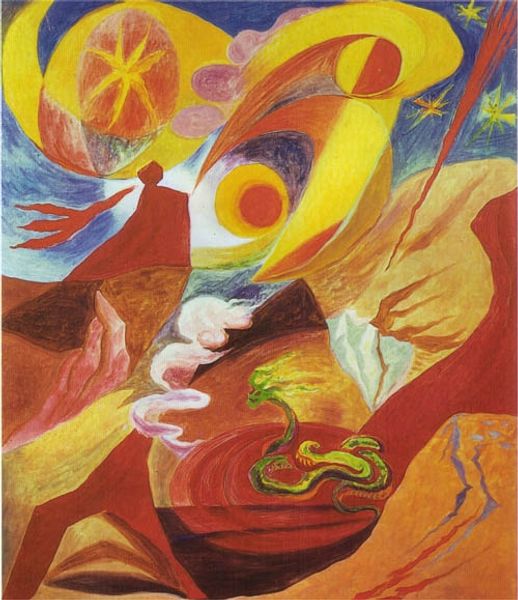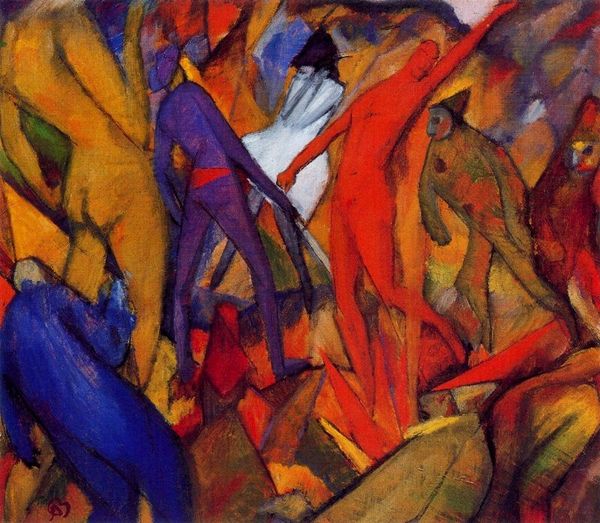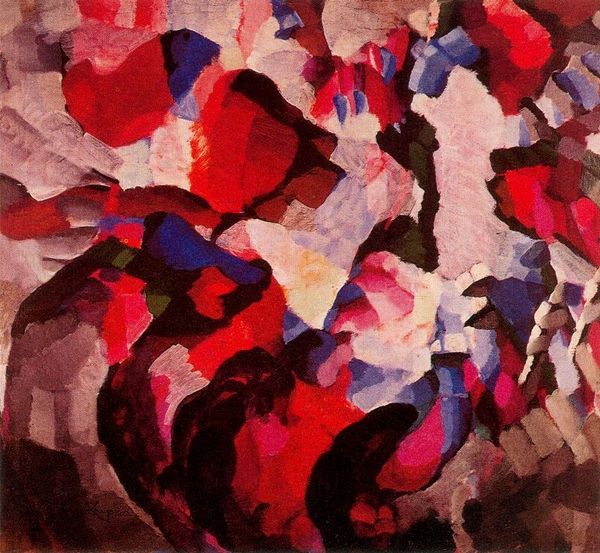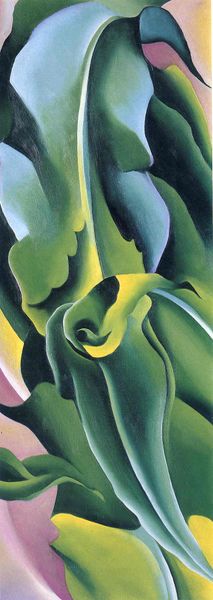
Dimensions: 91 x 131 cm
Copyright: Public domain
Curator: This compelling artwork before us is titled "Fighting Forms" and was created by Franz Marc in 1914. Editor: It looks like a swirling tempest, all crimson fury versus… bruised indigo surrender? Makes me uneasy, like peering into someone else's argument. Curator: Indeed. Understanding Marc requires looking at the turbulent period of its creation, right before World War I. The aggressive, angular shapes and clashing colors, it’s pure visual angst. There’s an immediacy here, stemming from his desire to capture the essence of primal forces in nature and emotion. Editor: Primal forces...yes! That red form seems poised to pounce, even tear itself apart, while that deep blue-black…swallows all light. You feel trapped by their interaction. The very thick impasto in places creates this urgency in contrast to sections which are thinner and more ethereal, like he was working very fast, driven almost mad. Curator: I would agree, and we have to consider his connection to "Der Blaue Reiter," or "The Blue Rider" group. The rejection of traditional representation was deeply tied to their socio-political views, hoping to offer an emotional and spiritual reality beyond what’s visible. Notice the geometry, an echo of Cubist principles adapted for expressive ends. Editor: Makes me think of how much trauma this artist could endure at this period. The animalism that marked him gives place now to geometric creatures that expressively symbolize violence and an open path to war. The picture space feels almost claustrophobic. What a head trip! It gives the feeling that war might even destroy the ground beneath our feet. I wonder about his palette here – the red screams while that cobalt lurks… very unsettling contrast. Curator: And ultimately tragic. Marc, deeply affected by the war’s inevitability, volunteered and died on the battlefield just two years after completing this work. "Fighting Forms," is more than just a depiction of battling shapes; it’s a visceral premonition of the horrors to come and I'm intrigued about the connection that these 'fighting forms' can establish today to our violent contexts as humanity, that still today appear to be fighting without making progress into dialogue. Editor: Gosh. So, in the end, he wasn’t just painting shapes, but also prophesying, like translating a dark omen into something tangible we could see, a feeling that words alone failed to capture? "Fighting Forms"... heavy, really heavy.
Comments
No comments
Be the first to comment and join the conversation on the ultimate creative platform.
